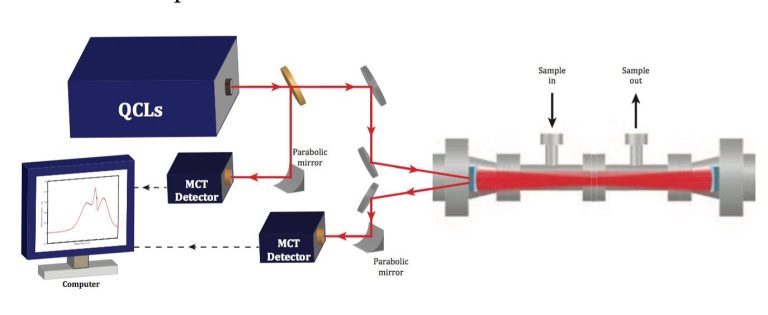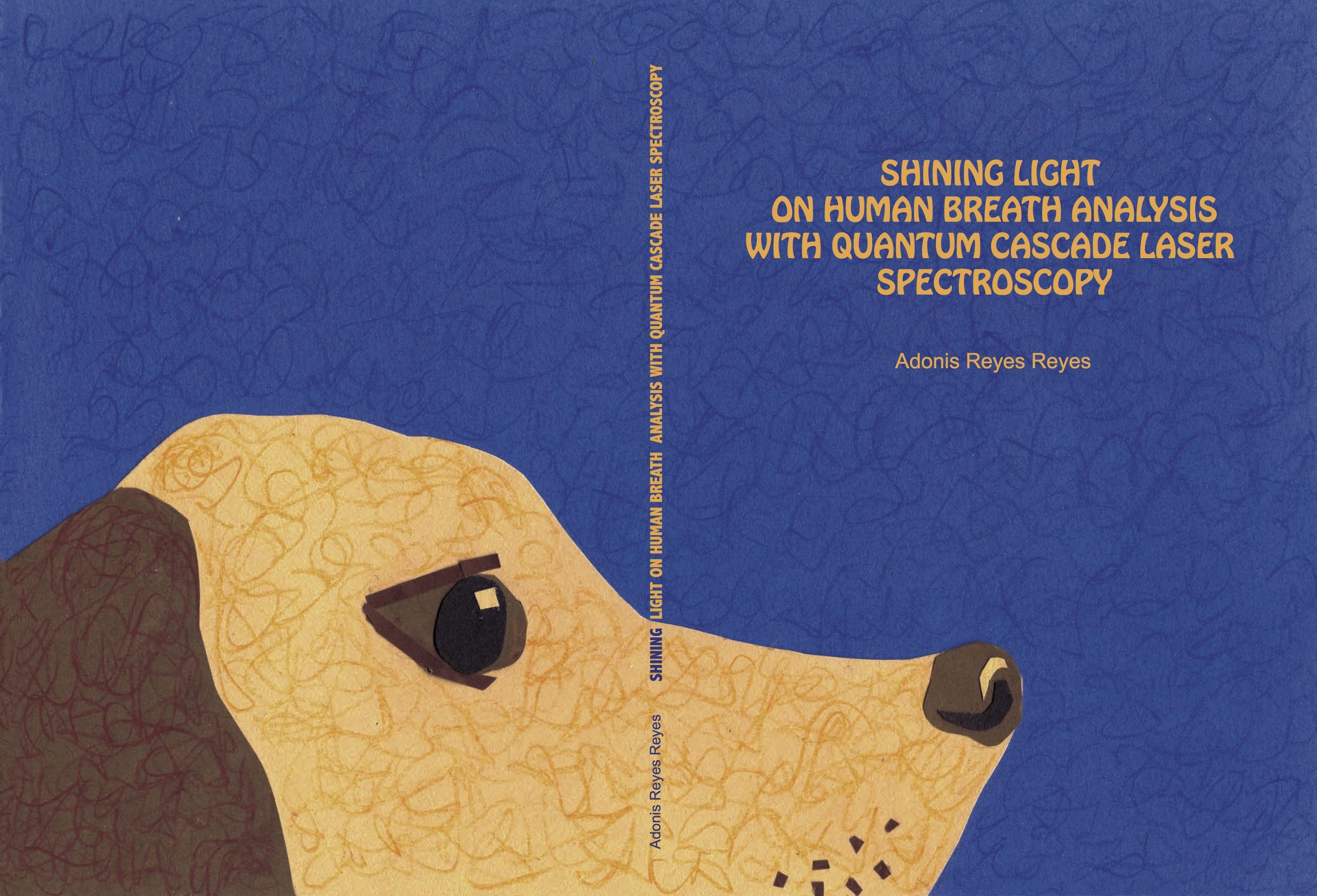Exhaled air contains thousands of different compounds, some of which have diagnostic value. A new laser analyser points the way toward portable and highly sensitive gas analys
(Foto: joakant / Pixabay)
There may be thousands of different components in human breath, but their concentration is mostly very low – like one part in a million (ppm) or less. Analysis of such trace gasses can be done by gas chromatography or mass spectrometry. Both techniques are expensive, although prices are coming down with the size of the equipment. The main disadvantage of both methods is the time it takes to produce a spectrum.
Diseases to diagnose
Yet, the list of diseases that may be diagnosed by breath analysis is growing. A short selection: ulcers and other stomach and bowel diseases, airway infections, asthma and cystic fibrosis, diabetes, gastric cancer and lung cancer.
A new technology, developed by Dr. Adonis Reyes Reyes during his PhD research at the Faculty of Applied Sciences (TNW), uses a tuneable and broadband solid-state infrared laser to measure the absorption spectra of gas mixtures.
“This is just the starting point of a new revolution in trace gas analysis that will continue growing,” Reyes wrote in his PhD thesis. “We can expect to see the first portable and highly sensitive gas analysis devices in the market in the next ten years.”

So how does this laser spectroscopy work? Reyes used a solid-state laser that produces mid-infrared radiation over a broad part of the electromagnetic spectrum. Exhaled organic molecules have a high absorption in this band.
The light is bounced back and forth hundreds of times in the multi-pass gas cell to increase the absorption. The out-coming light is measured by a mercury-cadmium-telluride (MCT) detector and compared to an identical sensor for reference.
A computer processes the data, using known absorption spectra from organic components in the gas. The corrections result in a sensitivity high enough to detect parts-per-billion concentrations of some key molecules such as acetone (related to diabetes) and nitric oxide (related to asthma).

A test with volunteers confirmed that adult type-1 diabetes patients tend to have larger than normal concentration of acetone in their breath. For children, this does not seem to be the case. Three diabetes type-1 patients participated in the test (two of whom were children) and one non-patient as a control.
Reyes points out that performances can be improved by using pre-concentration techniques that amplify specific concentrations by hundreds of times. He mentions the recent use of nanomaterials that can be functionalised to trap specific molecules selectively.
Miniaturisation of the set-up may be achieved by using hollow waveguides instead of relatively large gas cells, Reyes wrote. In waveguides, the laser fills all volume of the cell (or the waveguide in this case), resulting in an increased interaction with the captured gas.
Various research groups have combined pre-concentration with hollow waveguides into hybrid systems. They have published trace gas detection of, for example, TNT or H2S in ppm concentrations.
Potential for medical diagnosis
Considering its potential for medical diagnosis, alcohol tests and security, Reyes expects portable laser gas analysers to hit the market within the next ten years.
Reyes is currently working as ‘Invention Disclosure Coordinator’ at the Interuniversity Microelectronics Centre (IMEC) in Leuven, Belgium, where he scouts for suitable projects to be patented. “I am interested in the new, inventive ideas which not necessarily can be implemented right now, but may be feasible in 10 years,” he commented. “In summary, I like to dream about the future.”
Adonis Reyes Reyes, ‘Shining Light on Human Breath Analysis with Quantum Cascade Laser Spectroscopy’, PhD supervisors Prof. Paul Urbach and Dr. Nandini Bhattacharya (TNW), January 20, 2017.
Related article: Electronic nose sniffs out TNT
• START VIDEO AT 02:00



Comments are closed.